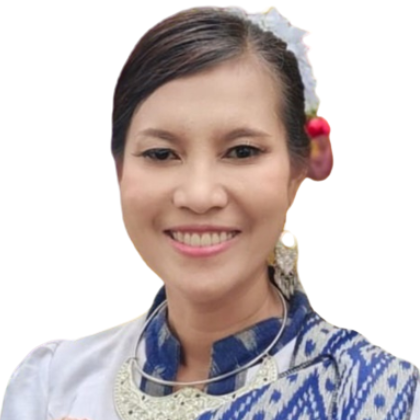How and Where the Birth Delivery Taking Place Matter towards the Success of Exclusive Breastfeeding
Downloads
Background: Breast milk is the best nutrition for babies. The coverage of exclusive breastfeeding in Indonesia in 2017 was still low. However, there are many factors that contribute to low rates of exclusive breastfeeding including socio-cultural factors, factors related to the health system, market, environment, and knowledge. Recent studies have shown that there was a relationship between the place and type of delivery with exclusive breastfeeding.
Objectives: This study aimed to analyze the correlation between the place and type of delivery with the success of exclusive breastfeeding practice in Indonesia among mothers of infants 0-6 months.
Methods: This study was a secondary data analysis using data from the results of the 2017 Indonesia Demographic and Health Survey (IDHS), conducted in 34 provinces in Indonesia with a total sample of 1810 infants aged 0-6 months. The dependent variable was the exclusive breastfeeding. Independent variables were mother's age, mother's level of education, parity, place of delivery, and type of delivery. Data collection was carried out for all variables by interviewing using a reproductive woman questionnaire. Data were analyzed using chi square test.
Results: The results showed that 48.2% of mothers gave exclusive breastfeeding. The results of the bivariate analysis showed that the variables of place of delivery (p-value=0.045), type of delivery (p-value<0.001), and mother's age (p-value=0.048) were related to the practice of exclusive breastfeeding.
Conclusions: The conclusion of this study was the factors that affecting exclusive breastfeeding in were place of delivery, type of delivery, and mother's age.
Aga, E. La and Alifariki, L. O. (2019) ‘Cakupan dan Determinan Pemberian Asi Eksklusif di Pemukiman Kumuh Dalam Perkotaan di Kecamatan Tallo Kota Makassar', Majalah Kesehatan, 6, pp. 44–55. doi: https://doi.org/10.21776/ub.majalahkesehatan.006.01.5.
Amir, A., Nursalim and Widyansyah, A. (2018) ‘Faktor-Faktor Yang Mempengaruhi Pemberian ASI pada Bayi Neonatal di RSIA Pertiwi Makassar', Media Gizi Pangan, 25(1), pp. 47–54.
Andayani, D., Emilia, O. and Ismail, D. (2017) ‘Peran Program Kelas Ibu Hamil terhadap Pemberian ASI Eksklusif di Gunung Kidul', Berita Kedokteran Masyarakat, 33(7), pp. 317–324. doi: 10.22146/bkm.18048.
Arisani, G. and Sukriani, W. (2020) ‘Determinan Perilaku Menyusui dengan Keberhasilan ASI Eksklusif di Wilayah Kerja Puskesmas Menteng Kota Palangka Raya', Window of Health : Jurnal Kesehatan, 3(2), pp. 104–115. Available at: http://jurnal.fkmumi.ac.id/index.php/woh/article/view/294.
Astuti, A. T. (2015) Faktor-Faktor yang Berhubungan dengan Praktik Pemberian ASI Eksklusif pada Bayi Usia 0-6 Bulan di Kabupaten Timor Tengah Selatan Provinsi Nusa Tenggara Timur. Universitas Gadjah Mada.
Badan Pusat Statistik (2018) ‘Survei Demografi dan Kesehatan 2017', Riset Kesehatan Dasar 2018, pp. 1–446.
Bai, Y. K. et al. (2009) ‘Psychosocial factors underlying the mother's decision to continue exclusive breastfeeding for 6months: An elicitation study', Journal of Human Nutrition and Dietetics, 22(2), pp. 134–140. doi: 10.1111/j.1365-277X.2009.00950.x.
Berutu, H. (2021) ‘Faktor-Faktor yang Berhubungan dengan Pemberian ASI Eksklusif di Wilayah Kerja Puskesmas Sitinjo Kabupaten Dairi Tahun 2020', Jurnal Ilmiah Keperawatan Imelda, 7(1), pp. 53–67. Available at: http://jurnal.uimedan.ac.id/index.php/JURNALKEPERAWATAN/article/view/512.
Deslima, N., Misnaniarti and Zulkarnain (2019) ‘Analisis Hubungan Inisiasi Menyusu Dini Terhadap Pemberian ASI Eksklusif di Wilayah Kerja Puskesmas Makrayu Kota Palembang', Jurnal Ilmiah Penelitian Kesehatan, 4(1), pp. 1–14.
Dewi, U. M. (2016) ‘Faktor yang Mempengaruhi Praktik Menyusui Pada Ibu Post Sectio Caesarea di RSI. A. Yani Surabaya', Jurnal Ilmiah Kesehatan, 9(1), pp. 43–47.
Emmanuel, A. and Clow, S. E. (2021) ‘Determinants of Exclusive Breastfeeding and Overall Duration of Breastfeeding among Mothers in Plateau, Nigeria', African Journal of Midwifery and Women's Health, 15(2), pp. 1–11.
Hakim, A. (2020) ‘Hubungan Karakteristik Ibu dengan Pemberian Asi Eksklusif', Journal of Healthcare Technology and Medicine, 6(2), pp. 767–778. doi: 10.33143/jhtm.v6i2.984.
Kementrian Kesehatan RI (2020a) ‘Peraturan Menteri Kesehatan Republik Indonesia Nomor 21 tahun 2020 tentang Rencana Strategis Kementrian Kesehatan tahun 2020-2024'.
Kementrian Kesehatan RI (2020b) Profil Kesehatan Indonesia tahun 2019. Jakarta: Kementrian Kesehatan RI.
Khoiriah, A. and Latifah (2018) ‘Faktor-Faktor yang Berpengaruh Terhadap Pemberian ASI Eksklusif pada Bayi Berumur di Bawah 6 Bulan di BPM Rusmiati Okta Palembang', Jurnal `Aisyiyah Medika, 2, pp. 69–87.
Kudarti, Kartasurya, M. I. and Pradigdo, S. F. (2015) ‘Difference Analysis of the Implementation of Ten Steps to Successful Breastfeeding between Private and Public Hospitals in District of Kudus', Jurnal Manajemen Kesehatan Indonesia, 3(3), pp. 235–242.
Kusumayanti, N. (2017) Faktor Determinan Pemberian ASI Eksklusif di Kecamatan Kademangan Kabupaten Blitar. Universitas Airlangga.
Lumbantoruan, M. (2018) ‘Hubungan Karakteristik Ibu Menyusui dengan Pemberian Asi Eksklusif pada Bayi di Desa Bangun Rejo Dusun 1 Kecamatan Tanjung Morawa Tahun 2018', Jurnal Maternal dan Neonatal, 3(1), pp. 13–22.
Mamonto, T. (2015) ‘Faktor-Faktor yang Berhubungan dengan Pemberian ASI Eksklusif pada Bayi di Wilayah Kerja Puskesmas Kotobangon Kecamatan Kotamobagu Timur Kota Kotamobagu', Kesmas Univ. Sam Ratulangi, pp. 56–66.
Marwiyah, N. and Khaerawati, T. (2020) ‘Faktor – Faktor Yang Berhubungan Dengan Pemberian ASI Eksklusif Pada Ibu Bekerja di Kelurahan Cipare Kota Serang', Faletehan Health Journal, 7(1), pp. 18–29.
Nishimura, H. et al. (2018) ‘Determinants of exclusive breastfeeding in rural South India', International Breastfeeding Journal, 13(1), pp. 1–7. doi: 10.1186/s13006-018-0178-5.
Novianti and Rizkianti, A. (2014) ‘Pemberian Asupan Prelakteal Sebagai Salah Satu Faktor Kegagalan ASI Eksklusif Pada Perkerja Buruh Industri Tekstil Di Jakarta', Jurnal Kesehatan Reproduksi, 5(1), pp. 23–36.
Nurbayanti, E. S. and Muhartati, M. (2016) Karakteristik Ibu yang Berhubungan dengan Pemberian ASI Eksklusif di Puskesmas Temon II Kulon Progo Yogyakarta, Universitas Aisyiyah Yogyakarta. Universitas Aisyiyah Yogyakarta. Available at: http://digilib.unisayogya.ac.id/id/eprint/2187.
Nurcahyani, A. S. (2017) Hubungan Inisiasi Menyusu Dini dengan Keberhasilan ASI Eksklusif di Wilayah Kerja Puskesmas Godean II, Skripsi. Universitas 'Aisyiyah Yogyakarta.
Pangesti, Y. D. (2019) Faktor Determinan yang Berhubungan dnegan Perilaku Ibu dalam Pemberian ASI Eksklusif di Kelurahan Sidotopo Surabaya. Universitas Airlangga.
Puspitasari, D. P. (2018) Hubungan Faktor Predisposing, Enabling, dan Reinforcing dengan Pemberian Makanan Pendamping ASI (MP-ASI) Dini Pada Bayi Umur 0-6 Bulan di Wilayah Kerja Puskesmas Tanjungsari Kota Surabaya. Universitas Airlangga.
Pusporini, A. D., Pangestuti, D. R. and Rahfiludin, M. Z. (2021) ‘Faktor-Faktor Yang Berhubungan dengan Praktik ASI Eksklusif di Daerah Pertanian Kabupaten Semarang (Studi Pada Ibu Yang Memiliki Bayi Usia 0-6 Bulan)', Media Kesehatan Masyarakat Indonesia, 20(2), pp. 83–90. Available at: https://ejournal.undip.ac.id/index.php/mkmi.
Rahayu, S. and Apriningrum, N. (2014) ‘Faktor-Faktor yang Berhubungan Pemberian Asi Ekslusif pada Karyawati Unsika Tahun 2013', Jurnal Ilmiah Solusi, 1(1), pp. 55–63.
Roesli, U. (2000) Mengenal ASI Eksklusif. I. Jakarta: Trubus Agriwidya. Available at: https://books.google.co.id/books?id=zWDmh8QBIkMC&printsec=frontcover&hl=id#v=onepage&q=komposisi asi&f=false (Accessed: 7 January 2021).
Rosmawaty and Sukarta, A. (2018) ‘Hubungan Jenis Persalinan dengan Produksi ASI di Rumah Sakit Nene Mallomo Sidrap tahun 2017', Jurnal Kebidanan dan Keperawatan Aisyiyah, 14(2), pp. 172–177.
Sari, E. P. (2019) ‘Analisis Determinan Pemberian ASI Eksklusif Ibu Bekerja di Wilayah Puskesmas Pringsewu Kabupaten Pringsewu', Jurnal Dunia Kesmas, 8(1), pp. 1–11.
Sriningsih, I. (2011) ‘Faktor Demografi, Pengetahuan Ibu tentang Air Susu Ibu dan Pemberian ASI Eksklusif', Jurnal Kesehatan Masyarakat, 6(2), pp. 100–106.
Suryani, D. et al. (2017) ‘Determinants Failure of Exclusive Breastfeeding On Health in The City Bengkulu', Jurnal Kesehatan Masyarakat, 12(2), pp. 96–104. doi: 10.15294/kemas.v11i1.3521.
Um, S. et al. (2020) ‘Determinants of Exclusive Breastfeeding of Infants Under Six Months among Cambodian Mothers', Journal of Pregnancy, 2020, pp. 1–7. doi: 10.1155/2020/2097285.
Utari, R. D. (2016) Determinan Keputusan Pemberian Air Susu Ibu (ASI) Eksklusif pada Ibu Bekerja Studi di RW IV Kelurahan Rungkut Kidul, Kecamatan Rungkut Kota Surabaya. Universitas Airlangga.
Wardani, E., Hastuti, U. and Adriani, R. (2017) ‘Relationship Between Sociodemographic Factors and Mother's Participation in Breast Feeding Support Group with Exclusive Breastfeeding Success in Banyuwangi', Journal of Maternal and Child Health, 2(4), pp. 335–344.
Warsini, Aminingsih, S. and Fahrunnisa, R. A. (2015) ‘Hubungan Antara Jenis Persalinan Dengan Keberhasilan Asi Eksklusif Di Kecamatan Baki Kabupaten Sukoharjo', KOSALA : Jurnal Ilmu Kesehatan, 3(2), pp. 66–71. doi: 10.37831/jik.v3i2.74.
WHO (2019) ‘Exclusive breastfeeding for optimal growth, development and health of infants', WHO. Available at: http://www.who.int/elena/titles/exclusive_breastfeeding/en/ (Accessed: 30 December 2020).
Widaryanti, R. (2016) ‘Determinan Pemberian Asi Eksklusif Di Puskesmas Wedi Kabupaten Klaten Jawa Tengah Tahun 2015', Jurnal Medika Respati, 11(4), pp. 52–68. Available at: http://medika.respati.ac.id/index.php/Medika/article/view/190.
Wulandari, D. R. and Dewanti, L. (2014) ‘Rendahnya Praktik Menyusui pada Ibu Post Sectio Caesarea dan Dukungan Tenaga Kesehatan di Rumah Sakit', Jurnal Kesehatan Masyarakat Nasional, 8(8), pp. 393–397. Available at: http://dx.doi.org/10.21109/kesmas.v8i8.410.
Copyright (c) 2022 Adamina Dinda Roseprilla, Trias Mahmudiono, Qonita Rachmah

This work is licensed under a Creative Commons Attribution-ShareAlike 4.0 International License.
Media Gizi Kesmas by Unair is licensed under a Creative Commons Attribution-ShareAlike 4.0 International License.
1. The journal allows the author(s) to hold the copyright and to retain the publishing right of the article without restrictions.
2. The legal formal aspect of journal publication accessibility refers to Creative Commons Attribution-Share-Alike (CC BY-SA).
3. The Creative Commons Attribution-Share-Alike (CC BY-SA) license allows re-distribution and re-use of a licensed work on the conditions that the creator is appropriately credited and that any derivative work is made available under "the same, similar or a compatible license”. Other than the conditions mentioned above, the editorial board is not responsible for copyright violations.



















